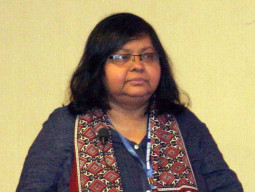
Twelve students from the Razia Hassan School of Architecture (RHSA) at the Beaconhouse National University designed two sustainable shacks using recyclable and cost effective materials for low income housing for the 2013 North Carolina State University Shackathon.
Two projects – The Firefly and The Ark – submitted for the competition landed the second spot out of more than 20 entries from all over the world.
The Shackathon, a design competition, is held every year at the NCSU in collaboration with the US Green Building Council and the Habitat for Humanity – an NGO that works for affordable housing.
This is the first time teams from Pakistan have participated in the competition. They were required to build a 10X10 feet shack using recyclable, reusable, and cost effective materials. The participants were instructed to build the shack for less than $300. They were also required to ensure that the structure was easy to assemble and did not take more than four hours to put together.
RHSA Assistant Professor Fariha Tariq said that 40 students participated at the initial stage. Two ideas were then shortlisted and two teams comprising six students each were formed. The teams had to add another feature -portability - to their designs. “The idea was to cater to the housing needs of people in disaster areas,” she said.
RHSA lecturer Farooq Usman Shahid said, “The more compact a structure, the harder it is to design and construct.”
Shahid helped the teams with the design. “What with a shortage of houses, especially in disaster prone areas, there is less focus on low income housing - something we should actually be working on.”
The Firefly - Jugnoo
Built using bamboo, parachute cloth and ropes, The Firefly is a raft-like structure that can be stationed on land or floated on water.
“Bamboo was a natural choice,” says Roha Yousaf, one of the team members, “It is easily available and recyclable.”
Rolling pins and halved car wheel rims were used to provide mobility to the structure.
Another team member, Jabran Ahmed, 20, said that the structure offered an ideal alternative shelter in disaster areas.
The structure is covered with a bright yellow parachute cloth. The structure resembles a firefly when lit up at night - hence the name. The design was awarded ‘best over-all design’ at the Shackathon.
The Ark
The Ark uses corrugated cardboard. The material provides the structure stability to cost effective and functional housing.
Fatima Zahra, one of the project team, said the team had initially faced challenges converting the model into an actual structure.
“The cardboard sheets lacked the sturdiness we were looking for,” she said, “So we attached several sheets to make it durable.”
The students worked with more than 100 sheets out of the 200 sheets provided by Packages. The structure can be taken down and reassembled.
“We designed a colour coded manual for that,” said Manal Qamar who was on the team.
The shacks were constructed over a month during their summer break. They cost between Rs20,000 to Rs25,000 each.
The team members said that they hoped to continue working on their designs to discover more ways of improving them.
RHSA Dean Gulzar Haider said he hoped to introduce a similar competition this winter.
“It would bring young minds together to develop architectural structures,” he said.
Published in The Express Tribune, September 26th, 2013.
COMMENTS (2)
Comments are moderated and generally will be posted if they are on-topic and not abusive.
For more information, please see our Comments FAQ
































1714024018-0/ModiLara-(1)1714024018-0-270x192.webp)









Very Well done
well done guys .